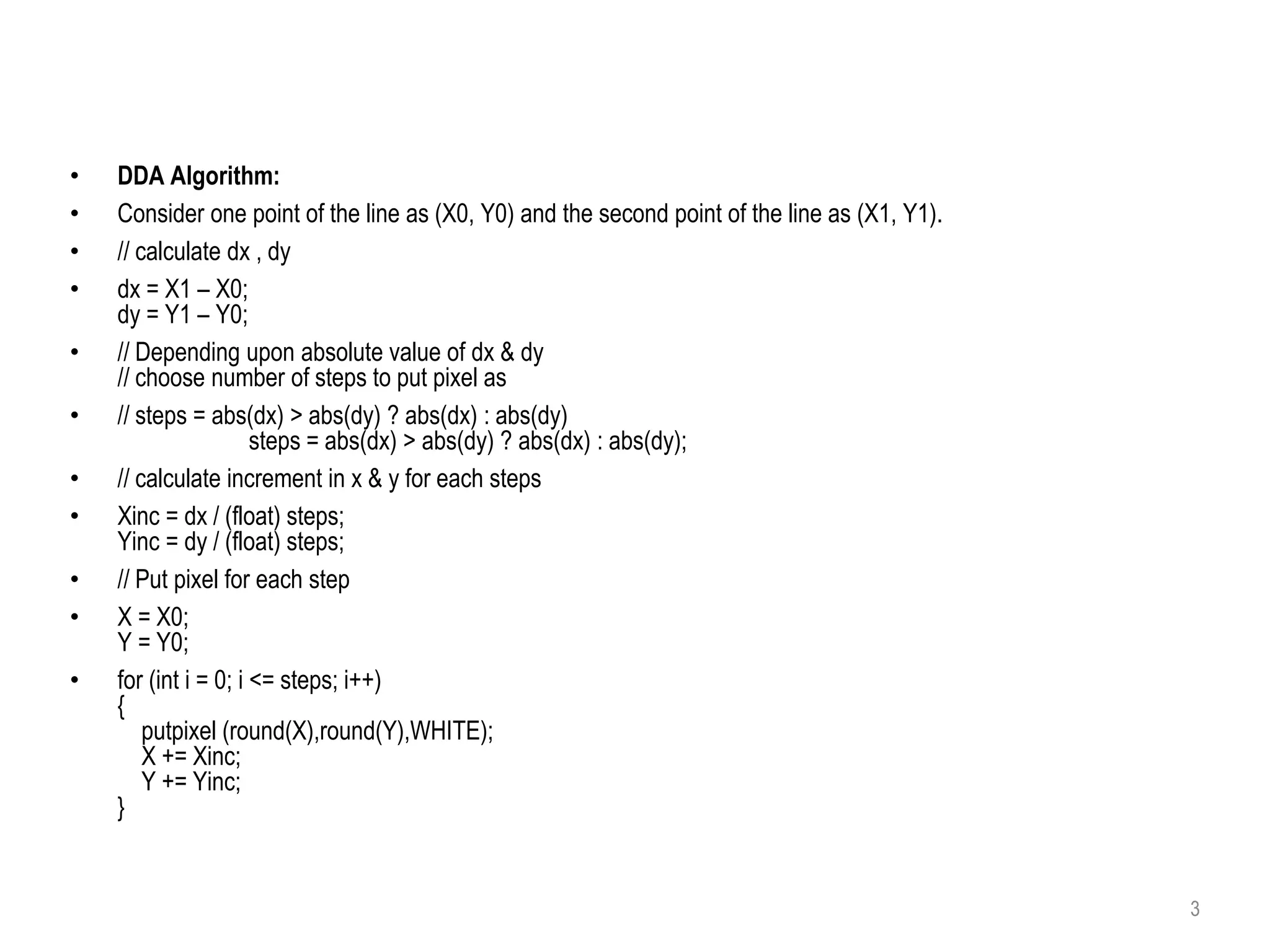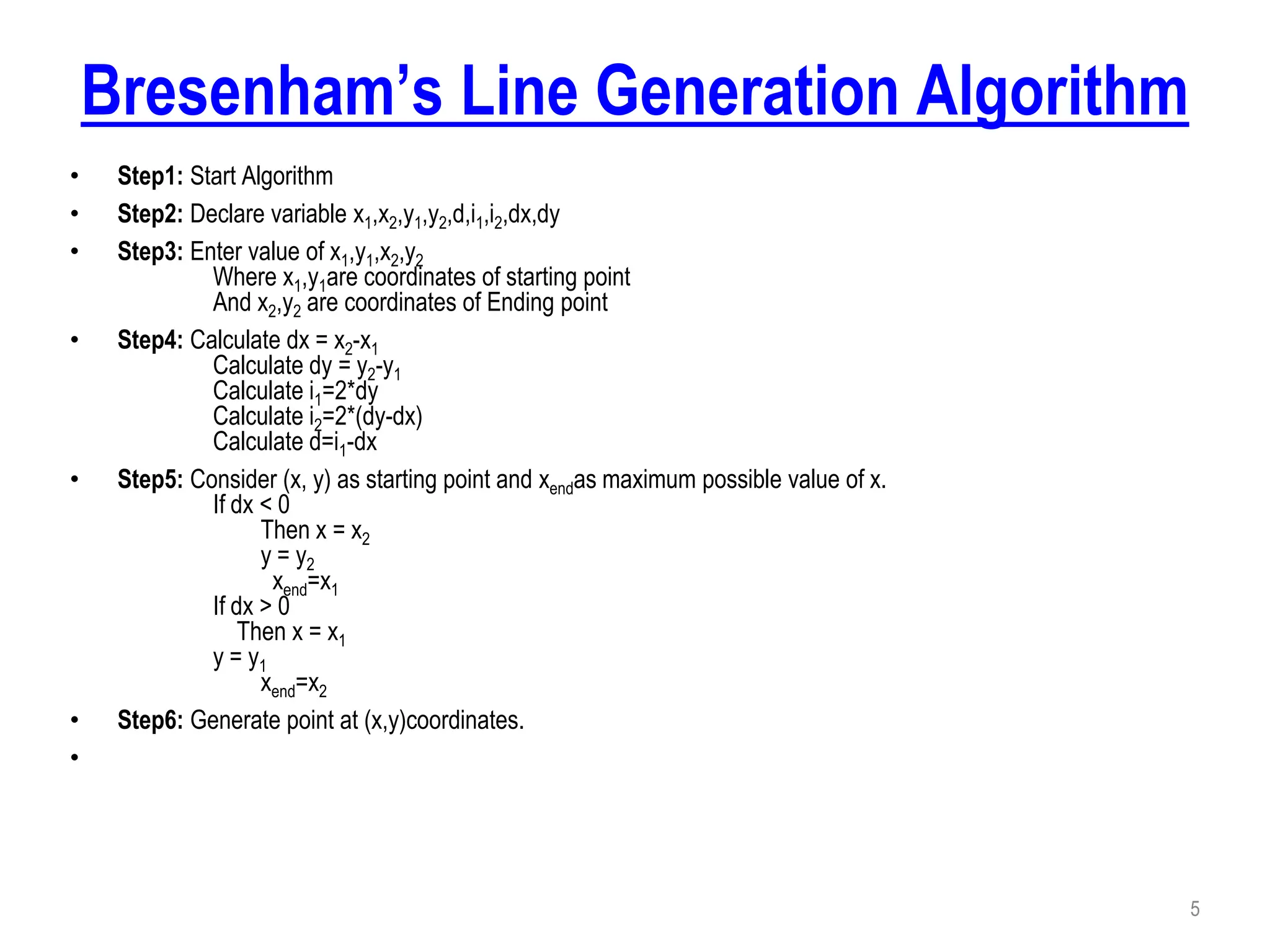The document describes two algorithms for drawing lines on a digital display: DDA (Digital Differential Analyzer) and Bresenham's.
DDA calculates pixel coordinates by incrementing along the x-axis and using the slope to calculate the corresponding y values. It is simple to implement but has limitations like inability to handle vertical lines.
Bresenham's algorithm uses integer arithmetic to determine pixel positions, incrementing x and y in a way that minimizes errors. It handles vertical, horizontal and diagonal lines efficiently with less computational effort than DDA.





